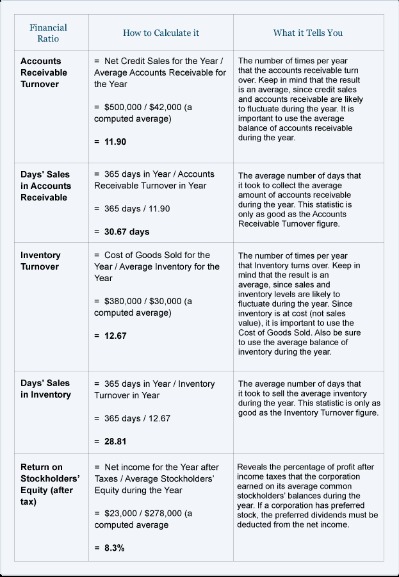A paper wallet is a general term given to a piece of paper with a private key (or seed phrase) written on it. It’s considered to be one of the best practices for keeping your private key safe. You can store crypto on a paper wallet, but it is no longer considered the most secure method. It may be used as a temporary storage solution, but it’s recommended only to keep small amounts of crypto there. If you’re serious about Bitcoin and want to store large amounts of coins you need to get some form of cold storage. If you can spare some more, I suggest using a hardware wallet, but if you can’t afford it or want to avoid it for any other reason, a paper wallet is the way to go.
- This way you can leave each copy at a different location and make it harder for someone to obtain your private key if they only stole one copy.
- You can store crypto on a paper wallet, but it is no longer considered the most secure method.
- Learn how to make a useful origami wallet that you can put real money into, using one sheet of rectangular paper.
- It’s important to keep the private key (on the right side) hidden and discreet.
In the early days of Bitcoin, paper wallets were a popular method for storing private keys offline, with the first paper wallet invented by Kroll at Bitaddress.org. These physical representations of private keys provided users with a tangible and secure means of storing cryptocurrencies, such as Bitcoin, away from the vulnerabilities of the Internet. However, as the crypto landscape evolved, new storage methods, including Bitcoin wallet solutions, offered alternative options for secure digital asset management. Throughout this comprehensive guide, we’ve explored the mysterious world of paper wallets, delving into their creation process, historical evolution, and current practical use cases.
Hot wallets connected to the Internet are typically used for regular transactions, offering convenience and user-friendly interfaces. However, their constant connection to the Internet makes them more susceptible to hacking and other security issues. A paper wallet is a great way to store your money if you have nothing else on hand. There are several designs that you can choose from, and you can customize the complete wallet with stickers and doodles. A “paper wallet” can also refer to a bitcoin code that you print out on a piece of paper.
They are a secure way to store digital assets away from online threats, ensuring your funds remain safe in cold storage. One of the most significant benefits of using paper wallets for crypto storage is their heightened should you invest in bitcoin security as a cold wallet. By storing your private keys offline, you minimize the risk of hacking and provide a secure cold storage option, which offers an advantage over software wallets connected to the Internet.
A well-crafted paper wallet, stored securely, can provide a strong line of defense against the ever-present dangers of the digital world. Cold storage wallets, such as paper wallets, provide a more secure storage option than a software wallet by keeping private keys offline and inaccessible to malicious actors. One such alternative came in the form of hardware wallets, which quickly gained popularity due to their improved security and convenience compared to paper wallets. Today, hardware wallets like Ledger and Trezor have become the preferred cold storage option for many crypto enthusiasts. Let’s dive deeper into the evolution of paper wallets and how hardware wallets came to dominate the market. In the ever-growing realm of cryptocurrencies, the crypto wallet stands out as an enigmatic yet indispensable cornerstone.
A Beginner’s Guide to Bitcoin Paper Wallets
Once you have your paper wallet you can load funds to it by using the Bitcoin address on the left side. It’s important to keep the private key (on the right side) hidden and discreet. If you’re really serious about safeguarding your Bitcoins you have to make sure you create an ultra secure paper wallet. The process is a bit tedious but if we’re talking about a large amount of money, it’s worth the effort. A private key is a long, confusing string of random characters, while a seed phrase is a set of 24 random words that allows you to restore your private key.
Step 1 – Install Ubuntu on your flash drive
Once you have a handle on making a longer wallet, you can experiment making shorter wallets that hold credit cards. Usually this process will be done for the purpose of storing large amounts of Bitcoin. It’s considered much safer than keeping coins on a hot wallet (i.e. a wallet that is connected to the internet). Second, if someone was able to hack BitAddress for example, they can collect all of the private keys that people created on the site. If you’d like to learn more about origami, check out our in-depth interview with Robert Homayoon.
When finished, make sure you are still able to print a test page so you’ll know your printer is functional. Last but not least, if you’re using Windows you may have been infected with Malware which you are unaware of. This may put your private key at risk as people may be monitoring your actions.
Paper wallets were a vital tool for early Bitcoin adopters, enabling secure and straightforward storage of their valuable cryptocurrency. One practical use case for paper wallets is gifting small amounts of crypto or using them as promotional giveaways. Their tangible nature and user-friendly design make them appealing for introducing others to cryptocurrencies. Additionally, the secure offline storage of private keys ensures that the recipient has complete authority over their funds. When printing or writing down the paper wallet’s private key, it is crucial to use a reliable printer and ensure the ink does not fade or smudge. After the final step of putting your private key onto paper, make sure to store it in a safe location, free from environmental threats and potential damage.
The Evolution of Paper Wallets
We’ve also discussed the risks and limitations of paper wallets and compared them to other popular storage methods, such as hot wallets and the increasingly popular hardware wallets. Now that we’ve explored the advantages and disadvantages of paper wallets, we must compare them to other crypto storage methods to determine the best solution for your needs. While paper how to buy spx wallets offer a secure offline storage option, there may be more convenient and user-friendly choices for some users. While paper wallets may no longer be the go-to choice for many crypto enthusiasts, they still hold a unique place in digital asset storage. The demand for more advanced storage solutions grew as the years passed and the crypto ecosystem expanded.
While paper wallets still have a place in cryptocurrency storage, the rise of hardware wallets and digital wallet options has undoubtedly changed the landscape. Offering both enhanced security and ease of use, hardware wallets have become the go-to choice for many crypto enthusiasts seeking a reliable and convenient storage solution. However, it’s essential to know the potential risks of generating paper wallets on devices infected with malware, bugs, or viruses. Always ensure that you use a trusted offline random number generator and a secure wallet creation process to maintain the highest level of security for your paper wallet.
Choosing between hot and cold wallets depends on your specific needs and priorities. A hot wallet may be better if you require easy access and frequent transactions. On the other hand, if you prioritize security and long-term storage, a cold wallet like a paper wallet or hardware wallet might be more suitable. When storing your Bitcoins on a paper wallet you can only load funds to the wallet. If you want to send those funds you’ll need to import or sweep the paper wallet’s private key to a software wallet in order to get access to your coins.
This way you can leave each copy at a different location and make it harder for someone to obtain your private key if they only stole one copy. Clicking F12 or F1 during the boot-up process will allow beginner’s guide to buying and selling cryptocurrency 2021 you to choose to run your operating system from your flash drive (#6 in the image below). At this point you should disconnect your computer from the Internet whether it has Wi-Fi or a LAN connection.
Simply put, a paper wallet is a piece of paper that has your private key written on it. This makes sure that your private key is kept offline away from the hands of hackers. If you are looking for a fun, easy origami project that you can also get daily use out of, consider making a wallet.
comments on “Paper Wallet”
By taking these precautions, you can enjoy the peace of mind of secure offline storage. You can generate as many addresses as you’d like by entering the amount on ‘Addresses to generate’. Now fold the paper in 1/2 perpendicular to the other folds and crease from the folds you just made.
An origami wallet is straightforward to make, can be customized to your tastes, and best of all, doesn’t cost more than a sheet of paper. There are a number of different ways to fold your wallet, and you can customize the finished product as much as you would like. My personal advice is that if you do end up using a paper wallet, take the time to go over the secure advanced method and create an ultra secure one. The extra 30 minutes or so you’ll invest in the process may end up to prove worthwhile.

